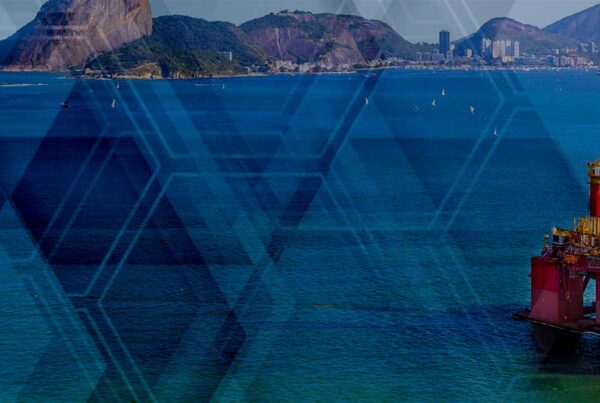Five-year FLNG Capex Forecast to Total $47.4 billion
The emergence of floating liquefaction will drive a significant increase in total global Capex over the period to 2019. While expenditure is expected to increase in the existing regasification market, the liquefaction sector is forecast to overshadow this, as Capex associated with a floating liquefaction terminal is more than triple that of a typical floating import terminal. Douglas-Westwood (DW) forecast that expenditure is set to total $47.4 billion (bn) over the 2013-2019 period, with over $28bn spent on FLNG liquefaction and $19.1bn on import terminals.
Murray Dormer author of DW’s new World FLNG Market Forecast commented, “Economic growth is driving electricity demand in the developing world and Asia will be a focus region for both liquefaction and regasification terminals between 2013 and 2019; accounting for 35% of global Capex. Australasia will account for 22% of the market, largely due to a number of liquefaction projects. Latin America will represent 17% of global FLNG expenditure, with projects involving both offshore liquefaction and regasification vessels.
“Increasing long-term demand is driving the value of gas reserves. However, in some places a lack of infrastructure makes the monetisation of reserves challenging. Interruption of gas supplies either via political or security-related risks are an ongoing issue in the exploration & production business. Boundary disputes, threats of civil unrest and war and terrorism are all ever-present challenges that the oil & gas industry is well-used to encountering. However, by siting infrastructure offshore, FLNG could help mitigate some proportion of risk in regions where these issues are apparent.
“Furthermore, developing new onshore infrastructure can also be difficult due to local opposition (the ‘Not In My Back Yard’ or NIMBY effect). The use of offshore regasification facilities, placed in relative proximity to existing gas markets, connected to shore by pipeline, is one method to alleviate such concerns. Finally, escalating costs of labour and raw materials and the tight contractor market have led to large increases in the cost of new onshore terminals in recent years with some costs equating to around $1,500 per tpa.”
With declining onshore hydrocarbon production, offshore exploration increasingly offers a solution where vast offshore conventional reserves exist and continue to be found. Historically, relatively little offshore natural gas exploration has occurred, the industry has instead focused on oil. Douglas-Westwood director Steve Robertson, commented, “In recent years it has become clear that the vast resources of both conventional and unconventional natural gas reserves in place will see it dominate the energy mix over the next century as these reserves are brought into production. The drive to develop these reserves is coming from a substitution effect as a result of high oil prices and a move away from the use of both coal and nuclear energy.
“Whilst the development of unconventional natural gas has proceeded at an extraordinary pace in the US, it should be remembered that it has the largest volume of land drilling equipment and services available domestically compared to any other country in the world. With the possible exception of China, it is difficult to see how the US unconventional gas development could be replicated elsewhere in the world within the next ten years. Furthermore, major factors such as uncertainty over long-term production levels, supply chain restraints and political issues could impede the development of unconventional gas markets.
“We are seeing the emergence of vast offshore conventional gas resources, which will offer a more predictable long-term source of supply. In excess of 100 tcf has been discovered in Mozambique and Tanzania alone – equivalent volumes to the world’s current annual natural gas consumption. Whilst the conventional reserves in place are vast, development will be technically complex as the finds are in water depths ranging from 800m to over 2,000m. However, with the progression of FLNG projects in Australasia, floating liquefaction is becoming an increasingly viable option for the production and export of natural gas in East Africa. It is also important to note that theoretically, FLNG would be the most economical strategy with a lower cost per tpa.”
Dormer concluded, “The challenge of how to access the substantial volumes of conventional offshore natural gas reserves is bringing new technology to the fore. Floating LNG is the current favoured option for export from Israel’s Tamar project and follows commitments by both Shell and Petronas to proceed with construction of FLNG vessels. With the commencement of construction of Shell’s first FLNG unit, we can consider the technology now an accepted solution. For more than 30 years FLNG export has been an ambition of the offshore industry, but Iit is now well on the way to reality. 2012 has been a real milestone for the industry with steel cut on the first project. The sector is now buoyant with the prospect of over $47bn to be spent 2013-2019.”



